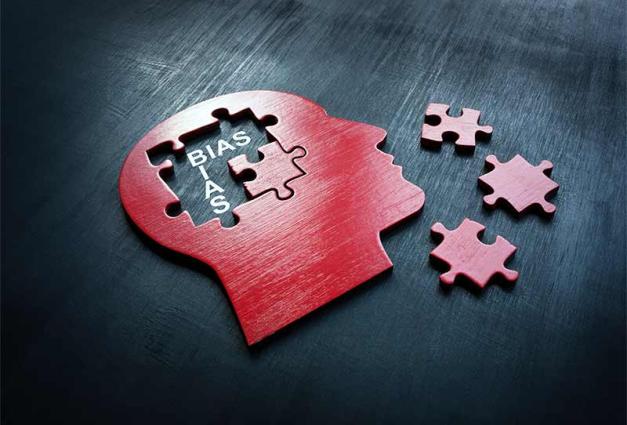Many of our behaviors are simply habits requiring little thought. For example, imagine that you are holding a baby in your arms. Try to visualize in your mind its face, eyes, mouth, arms, and body. Now, imagine you turn your head to look directly at the baby's face.
We guess that you, especially if you are a woman, imagined that the baby's head was on your left and, therefore, you turned your head to the left—didn’t you?
This was just a quick demonstration of the existence of a left-side preference for holding babies, a behavior that humans have shown for as long as anyone has noticed. In fact, it has been tracked down across different cultures and ages by sifting through works of art and archeological remains. Yet, most people are unaware of the existence of such a preference.
In fact, women and—also but a little less—men prefer to cradle babies on their left side regardless of whether they are right- or left-handers. This preference is known in the scientific community since the 1960s, when the American psychologist Lee Salk first observed a monkey mother at the Central Park Zoo in New York City holding her infant almost always on the left. As he worked at a maternity hospital, he was motivated to observe mothers while they were cradling their newborns and found that they had the same left-preference as he saw in the monkey. From then on, several scientific studies revealed more about this behavior.
However, this ‘left-cradling bias’ is still a puzzling phenomenon. Originally explained by the idea that positioning the baby on the left would expose the infant to the pacifying sound of the mother’s heartbeat, this theory was discarded after the left preference was also found when the heart was located on the right side of the mother’s chest. Also discarded was the explanation supposing that left cradling would leave the mother’s dominant right hand free for other tasks, because this preference was also found in left-handed women.
The currently accepted explanation of the preference points to how the two sides of the brain manage the perception and expression of emotions: given that most sensory information from one side is processed in the brain’s opposite side, cradling the baby on the left means that the baby’s sights and sounds go more to the right side of the mother’s brain, which is better at processing emotional and social information. At the same time, the child would be most exposed to the left side of the mother’s face, which research has shown to express emotions more intensely, again due to the connection of the left side of the body to the ‘more emotional’ right side of the brain.
We also now know that the left-cradling preference is connected to the well-being of the mother and, thus, of the child. In the Psychobiology Lab at the University of Chieti (Italy), we have conducted several studies on this interesting phenomenon and we discovered that women who cradled typically on the left showed higher levels of empathy (the ability to place themselves in another’s shoes) and attachment (the emotional bond with significant individuals) toward both their own mother and their romantic partner. In contrast, those cradling on the right showed higher levels of depression and less satisfying relationships.
If it’s true that the simple evaluation of a left or right cradling preference is connected to social bonding, we wondered whether racial attitudes would affect how women cradle babies with different ethnic appearances. For this research, instead of using real babies, we asked White women to cradle either a light-skinned doll or a doll with dark skin. We found that women who had more of a tendency to cradle the dark-skinned doll on the less typical right side had higher levels of both blatant and subtle measures of negativity toward Black people.
These findings suggest that cradling on the left is a behavioral index of positive emotional closeness between mother and child, and that cradling on the right might be more likely when some source of interference (such as stress, depression, or negative attitude toward the baby) occurs in the relationship.
Of course, we are not saying that cradling side is the litmus test of the emotional quality of the mother-infant relationship, nor that holding a baby on one’s right side necessarily indicates ambivalent or negative attitudes toward the baby for racial or any other reason, but it might represent a useful index along with many others.
For Further Reading
Malatesta, G., Marzoli, D., Morelli, L., Pivetti, M., & Tommasi, L. (2020). The role of ethnic prejudice in the modulation of cradling lateralization. Journal of Nonverbal Behavior, in press. doi: 10.1007/s10919-020-00346-y
Malatesta, G., Marzoli, D., Piccioni, C., & Tommasi, L. (2019). The relationship between the left-cradling bias and attachment to parents and partner. Evolutionary Psychology, 17(2). doi: 10.1177/1474704919848117
Malatesta, G., Marzoli, D., Rapino, M., & Tommasi, L. (2019). The left-cradling bias and its relationship with empathy and depression. Scientific Reports, 9, 6141. doi: 10.1038/s41598-019-42539-6
Pettigrew, T. F., & Meertens, R. W. (1995). Subtle and blatant prejudice in Western Europe. European Journal of Social Psychology, 25(1), 57-75. doi: 10.1002/ejsp.2420250106
Gianluca Malatesta is a post-doctoral researcher at University “G. d’Annunzio” of Chieti-Pescara (Italy). He studies hemispheric specialization with particular reference to early mother-infant behavioral asymmetries.
Daniele Marzoli is assistant professor of Psychobiology and Physiological Psychology at University “G. d’Annunzio” of Chieti-Pescara (Italy).
Luca Tommasi is full professor of Psychobiology and Physiological Psychology at University “G. d’Annunzio” of Chieti-Pescara (Italy) and is the head of the Psychobiology Lab.




